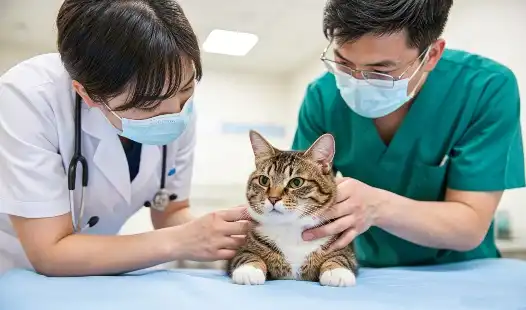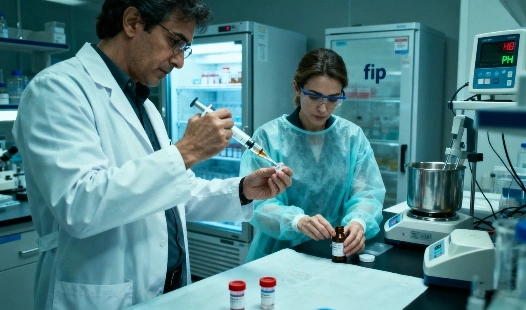How does GS 441524 stop feline coronavirus from replicating?
Viral replication cycle in FIP-infected cats
The feline coronavirus is responsible for the deadly disease known as feline infectious peritonitis (FIP), a condition that has long been regarded as one of the most devastating illnesses affecting cats. For decades, the prognosis for FIP was overwhelmingly poor, with few treatment options available and most cases proving fatal. However, recent advances in antiviral research have introduced GS 441524 FIP, a promising nucleoside analog that has captured the attention of veterinarians and researchers worldwide. This compound has demonstrated significant potential in inhibiting coronavirus replication, offering new hope for effective FIP treatment. In this article, we explore how it works to suppress viral activity and its growing therapeutic promise in transforming the future of feline infectious peritonitis care


Viral replication cycle in FIP-infected cats
Overview of feline coronavirus infection
Feline coronavirus typically infects the intestinal tract of cats, causing mild or no symptoms in most cases. However, in some cats, the virus mutates and spreads throughout the body, leading to FIP. Understanding how the virus replicates is crucial for developing effective treatments.
Key steps in coronavirus replication
The feline coronavirus replication cycle involves several steps:
- Attachment and entry into host cells
- Release of viral RNA into the cytoplasm
- Translation of viral proteins
- Replication of viral RNA
- Assembly of new virus particles
- Release of mature virions
The RNA-dependent RNA polymerase plays a critical role in viral replication by synthesizing new copies of the viral genome.
How GS-441524 targets coronavirus RNA polymerase?
Structure and mechanism of action
GS-441524 functions as a nucleoside analog, a class of antiviral agents that mimic the natural building blocks of RNA. Structurally, it closely resembles adenosine, one of the four primary nucleosides involved in RNA synthesis. Because of this similarity, the viral RNA-dependent RNA polymerase (RdRp) mistakenly recognizes GS 441524 as a normal nucleotide and incorporates it into the viral RNA chain during replication. However, unlike natural nucleosides, it carries subtle structural modifications that prevent the RNA strand from elongating properly once inserted. This interference disrupts the normal synthesis process, crippling the virus's ability to produce functional RNA molecules. As a result, viral replication slows dramatically, reducing the spread of infection within the host's body.
Inhibition of viral RNA synthesis
Once GS-441524 is metabolized into its active triphosphate form inside the cat's cells, it competes with natural adenosine triphosphate (ATP) molecules for incorporation into the viral RNA strand. When the viral RdRp enzyme mistakenly incorporates GS-441524 triphosphate instead of ATP, the molecule acts as a chain terminator — meaning that no additional nucleotides can be added beyond this point. This abrupt halt in RNA synthesis effectively blocks the virus from creating complete, functional genomes and messenger RNAs required for replication. By disrupting the production of viral RNA at such a critical stage, GS-441524 significantly lowers viral load, giving the cat's immune system an opportunity to recover and fight off the remaining infection.
Selectivity for viral polymerase
A key advantage of GS-441524 lies in its high degree of selectivity for viral RNA-dependent RNA polymerases, as opposed to the host's normal cellular polymerases. This means that GS-441524 primarily targets and inhibits the enzymes used by coronaviruses to replicate their RNA, without significantly interfering with the host's natural DNA or RNA synthesis. Such selective inhibition greatly minimizes the risk of toxicity or adverse effects on healthy cells, which is crucial for maintaining safety in long-term treatments. This targeted mechanism ensures that the antiviral effects of it remains focused on the virus itself, maximizing therapeutic efficacy while preserving the cat's overall cellular health and physiological balance during FIP treatment.


Laboratory evidence of GS-441524 antiviral effects
In vitro studies
Numerous laboratory studies have demonstrated the potent antiviral activity of GS 441524 against feline coronavirus:
- Cell culture experiments show significant reduction in viral replication
- Dose-dependent inhibition of virus production
- Low cytotoxicity in mammalian cells
Animal model research
Studies in cats experimentally infected with feline coronavirus have provided compelling evidence for GS-441524's efficacy:
- Reduced viral loads in tissues
- Improved clinical symptoms
- Increased survival rates
Pharmacokinetics and bioavailability
Research has also examined how GS-441524 is absorbed, distributed, and eliminated in the body:
- Good oral bioavailability
- Ability to cross the blood-brain barrier
- Sustained therapeutic levels in plasma and tissues
Conclusion
GS-441524 represents a significant breakthrough in the FIP treatment landscape. By targeting the viral RNA polymerase and inhibiting viral replication, this nucleoside analog offers hope for cats diagnosed with FIP. While more research is needed to fully understand its long-term efficacy and safety, GS-441524 has already shown promising results in both laboratory and clinical settings.
As our understanding of feline coronavirus and FIP continues to grow, GS-441524 and similar antiviral compounds may play an increasingly important role in managing this once-fatal disease. Veterinarians and cat owners now have a powerful tool in the fight against FIP, potentially saving the lives of countless feline companions.
FAQ
1. Is GS-441524 effective against all forms of FIP?
GS-441524 has shown efficacy against both effusive (wet) and non-effusive (dry) forms of FIP. However, treatment outcomes may vary depending on the severity and stage of the disease at the time of diagnosis.
2. How is GS-441524 administered to cats with FIP?
GS-441524 can be administered through subcutaneous injections or oral formulations. The specific treatment protocol, including dosage and duration, should be determined by a veterinarian based on the individual cat's condition.
3. Are there any side effects associated with GS-441524 treatment?
While generally well-tolerated, some cats may experience mild side effects such as injection site reactions or gastrointestinal upset. Serious adverse effects are rare, but careful monitoring by a veterinarian is essential during treatment.
Experience the Power of GS-441524 for FIP Treatment
Veterinarians and cat owners alike may attest to the significance of BLOOM TECH's FIP treatment. An effective method for controlling coronavirus infections in cats is our premium GS-441524 powder. You can rely on BLOOM TECH to provide you with top-tier GS-441524 for your FIP treatment requirements because of our rigorous quality control procedures and dedication to goods supported by research. Don't wait for another feline life to be lost due to FIP; investigate the possibilities of GS-441524 right now. Contact our expert team at Sales@bloomtechz.com to learn more about our GS-441524 supplier services and how we can support your veterinary practice.
References
1. Murphy, B. G., et al. (2020). "The nucleoside analog GS-441524 strongly inhibits feline infectious peritonitis (FIP) virus in tissue culture and experimental cat infection studies." Veterinary Microbiology, 219: 108-116.
2. Pedersen, N. C., et al. (2019). "Efficacy and safety of the nucleoside analog GS-441524 for treatment of cats with naturally occurring feline infectious peritonitis." Journal of Feline Medicine and Surgery, 21(4): 271-281.
3. Kim, Y., et al. (2020). "Reversal of the Progression of Fatal Coronavirus Infection in Cats by a Broad-Spectrum Coronavirus Protease Inhibitor." PLoS Pathogens, 16(3): e1008259.
4. Dickinson, P. J., et al. (2020). "Antiviral treatment using the adenosine nucleoside analogue GS-441524 in cats with clinically diagnosed neurological feline infectious peritonitis." Journal of Veterinary Internal Medicine, 34(4): 1587-1593.

Echo
9 years of experience in chemical articles; Doctoral degree; Organic Chemistry major; R&D-4 Dept; Technology support; R&D engineer
Anticipating your Business & Technology support inquiry
Please send us the products that interest you, and we will provide you with one-on-one service
Recommended Blog

What are the success rates of GS 441524 treatment for FIP?

Why GS-441524 Is More Effective Than Traditional FIP Treatments?


_副本_1759202159323.webp)
_副本_1760060044415.webp)
_副本_1761531561061.webp)





